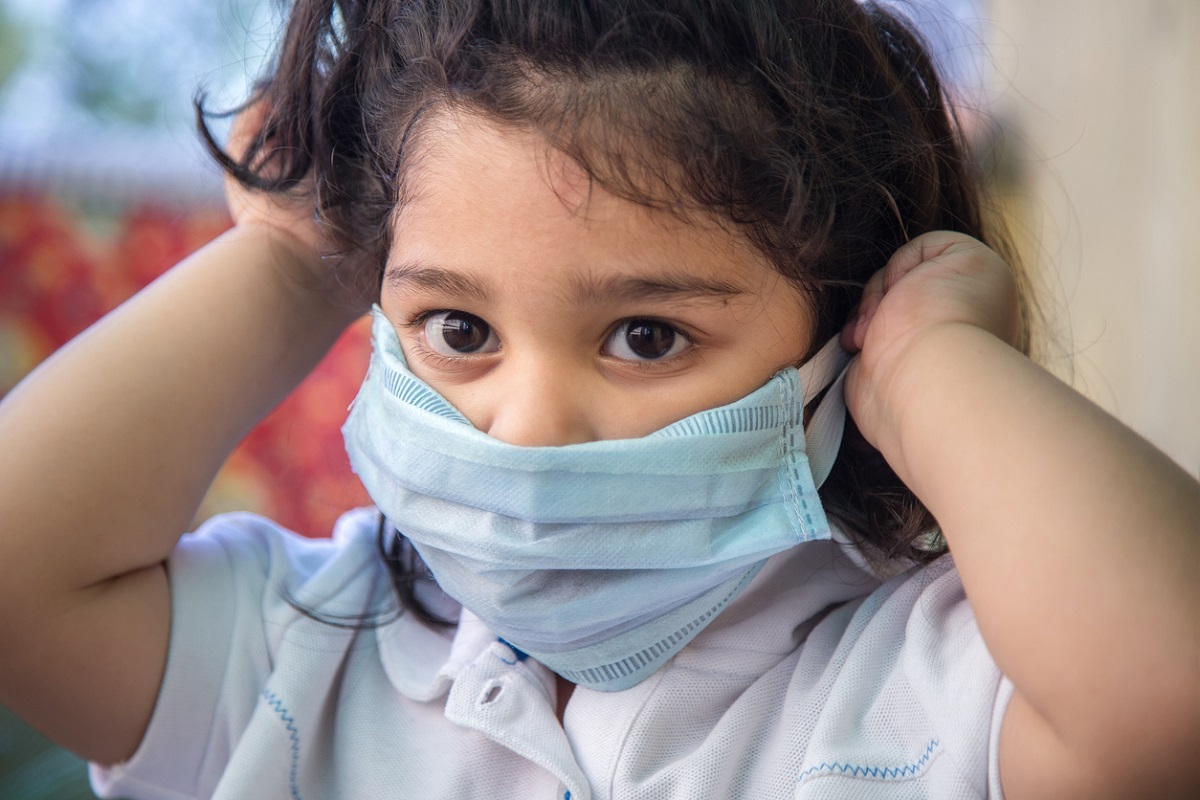India logs 110 new Covid-19 cases
With the addition of the new cases of infections the overall caseload of the country rose to 4,50,28,163, including the JN.1 Covid variant cases.
Dr Dhiren Gupta, a paediatrician at Sir Ganga Ram Hospital said that children are now approaching with complaints of high-grade fever and gastrointestinal issues.

(Representational Image: iStock)
The second wave of Covid-19 seems to have hit children hard as, unlike last year, many of them, are highly exposed to the coronavirus. Children as young as two months old contracting the viral disease. Worryingly, many of them are now turning symptomatic.
Dr Dhiren Gupta, a paediatrician at Sir Ganga Ram Hospital said that children are now approaching with complaints of high-grade fever and gastrointestinal issues.
“Scenario has changed from last year. Children were getting infected in the previous wave as well but now they are showing symptoms of the disease. They complaint high-grade fever, headache, gastrointestinal issues like diarrhoea etc. I’ve seen infants as young as 2 month-old contracting Covid with symptoms,” he said.
Advertisement
“This is a little worrying part since we did not witness see infants getting infected last year. The paediatric age was affected but the transmission was limited to teenagers,” Gupta observed.
He also estimated that that positivity among children has also increased by around 50% in his hospital.
Dr Ashutosh Sinha, additional director, paediatrics, Fortis Hospital, Noida said that positivity in the children is now comparable to adults.
“The positivity, as well as symptoms, were very controlled in children last year. But this is not the case anymore. Earlier, among children who showed symptoms, very few of them were tested positive. Now, almost every child with symptom is turning Covid positive, which is similar to cases we see in adults,” he observed.
However, the silver lining amid the worrying scenario is that almost all the cases in children are manageable at home and recovery is also quick.
“We are not seeing hospitalisation among the children since their disease is limited to mild in nature and they also tend to recover within a week,” Gupta said.
“Though their (children) caseload is still low and severity of the infection is also mild, we still have to remain very cautious so that situation doesn’t deteriorate because that will lead to a catastrophe,” he cautioned.
The experts are attributing several reasons behind the rise in infectiousness of the SARS-CoV-2 and increasing symptoms among the children. The reasons range from laxity, high mobility to the effect of mutant strains.
“What we understood earlier that the young population was carrying the infection back home since they were more likely to go outside and intermingle. Now children are not limited to home boundaries. They are everywhere, in playgrounds, markets, trains, buses, metro and socializing and accompanying family in outings. So this increased mobility has the caused high chances of transmission,” Sinha said.
Meanwhile, Gupta said that a genomic sequencing study is required to assess the actual cause behind the spurt in children.
“When the whole population is affected, one can not assume that the children will remain safe. Besides, it is hard to disciple children to inculcate Covid appropriate behaviour like masking and social distancing. However, the symptoms arriving in them should be investigated. Genomic sequencing may answer this,” he suggested.
Advertisement